If you are planning your upcoming garden, you may be wondering how easy it is to germinate and grow rhubarb seeds. Popular in pies and preserves, growing rhubarb from seed is easier than you might think. Plus, one of the many benefits to starting rhubarb in your garden is the fact that it reseeds and returns year after year, with some cultivars living for decades!
Growing rhubarb seeds begins in winter, indoors. Start your seeds in peat pots, roughly 2 months before your final spring frost. Plant just before that final frost occurs, or whenever your soil is workable. You can only direct-sow rhubarb seeds in warm zones, but tending to rhubarb seedlings is easy.
Let’s go over in more detail how you can best grow rhubarb from seed now.
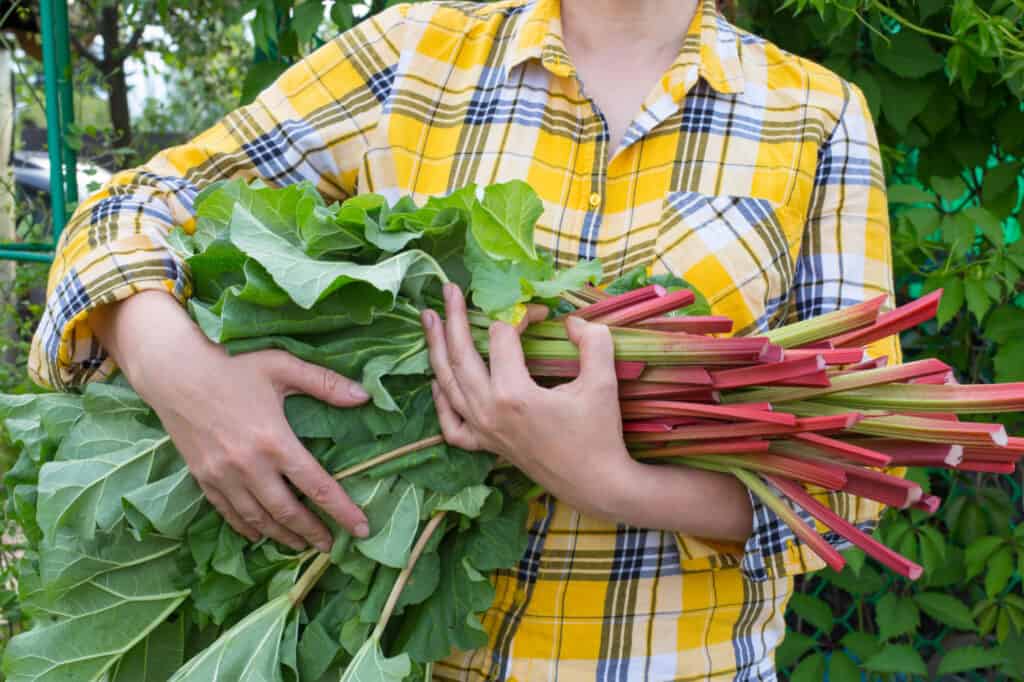
You can only direct-sow rhubarb seeds in warm zones, but tending to rhubarb seedlings is easy.
©Marika Kosheleva/Shutterstock.com
| Rhubarb Seeds | How to Grow |
|---|---|
| Hardiness Zones | 2-10 |
| Number of Rhubarb Varieties | Over 100, including giant and early harvest varieties |
| Time of Year to Germinate Seeds | Wintertime; start seeds indoors, roughly 2 months before your final spring frost date |
| Time of Year to Plant Seedlings | A week before your final spring frost |
| Things to Note | If properly cared for, a single rhubarb planting can survive for over a decade! |
Types and Varieties of Rhubarb Seeds
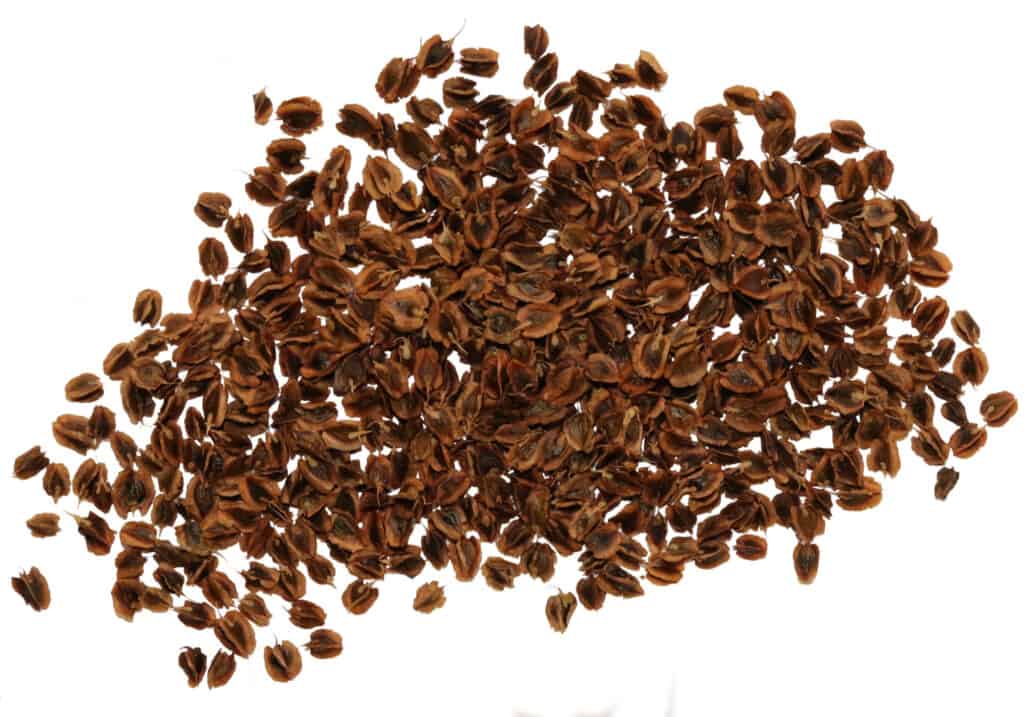
Rhubarb plants produce hundreds of seeds.
©Wouter Midavaine/Shutterstock.com
While all varieties will be tart and delicious, there are a number of rhubarb cultivars to choose from- over 100 to be more precise. Some varieties are large, some more compact. You may want to choose a variety based on reported flavor, or even how hardy some varieties are to cold temperatures! Plus, some rhubarb varieties allow you to harvest a small amount during their first year of growth, which means you don’t have to wait as long as others.
If you’re seeking a reliable rhubarb cultivar, here are some of our top picks:
- Victoria. Available around the world, widely known, and particularly cold hardy.
- Riverside Giant. Produces huge green stalks and reaches up to 5 ft tall!
- Crimson Red. Bright red stalks with a particular sweetness, perfect for rainy regions.
- Cherry Red. One of the sweetest varieties, and happy to be an ornamental plant too.
- Glaskins Perpetual. Older cultivar and perfect for a late-season harvest.
- Timperley Early. Perfect for an early harvest, and can even be picked in its first year!
Germinating and Growing Rhubarb from Seed
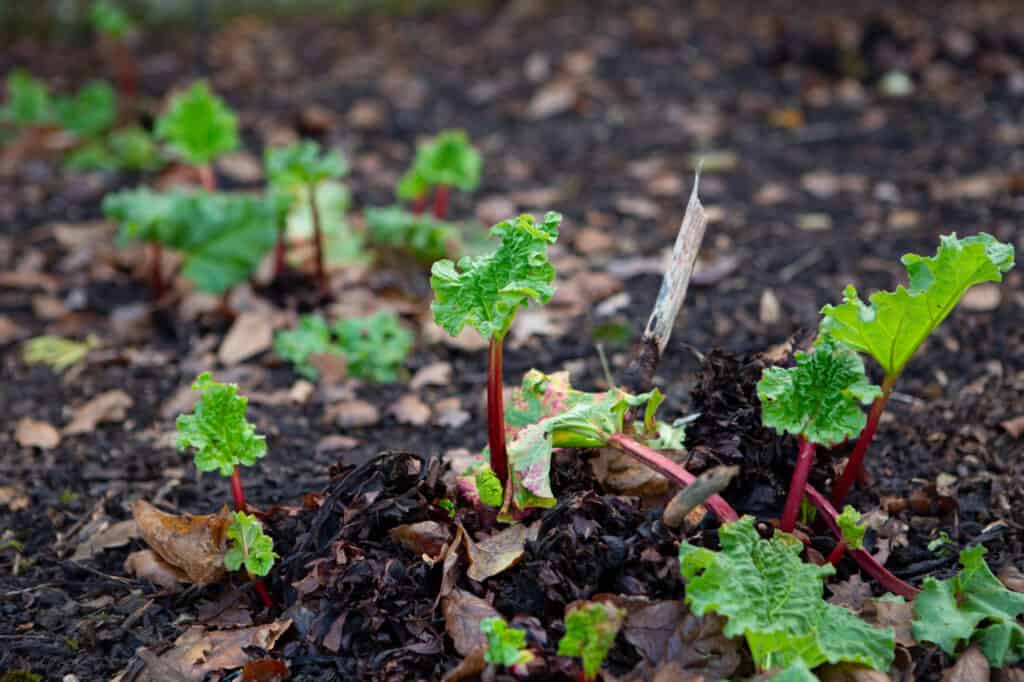
Once they are roughly 5-6 inches tall and have grown accustomed to outdoor temperatures, you can safely plant your rhubarb in your garden.
©Jess Gregg/Shutterstock.com
Since directly sowing rhubarb seeds into the ground isn’t an ideal way of growing these stalks, how can you best germinate rhubarb seeds? Thankfully, there are a number of different methods for growing rhubarb plants, beginning indoors so that you can be ready to plant when warmer weather comes!
Here’s our step-by-step guide for how to best grow rhubarb seeds.
How to Grow Rhubarb Seeds
- Moisten your seeds. Rhubarb seeds have a unique papery coating that needs to be softened before planting. All you need to do is place your seeds between damp paper towels and allow them to sit an hour before planting. Easy!
- Plant your seeds. Use peat pots or whole flats and space 2-3 seeds per every couple inches. Use compost and high quality gardening soil, as rhubarb needs plenty of organic matter. Begin your seeds 2-3 months before your final spring frost date.
- Grow your seeds indoors for 2 months. Once your final spring frost date gets close, place your rhubarb outside during the day or leave them out overnight when the weather’s above 50 degrees Fahrenheit.
- Plant your young rhubarb plants. Once they are roughly 5-6 inches tall and have grown accustomed to outdoor temperatures, you can safely plant your rhubarb in your garden. Make sure to give your stalks plenty of space, and some shade is preferred.
Special Features of Rhubarb and Rhubarb Seeds
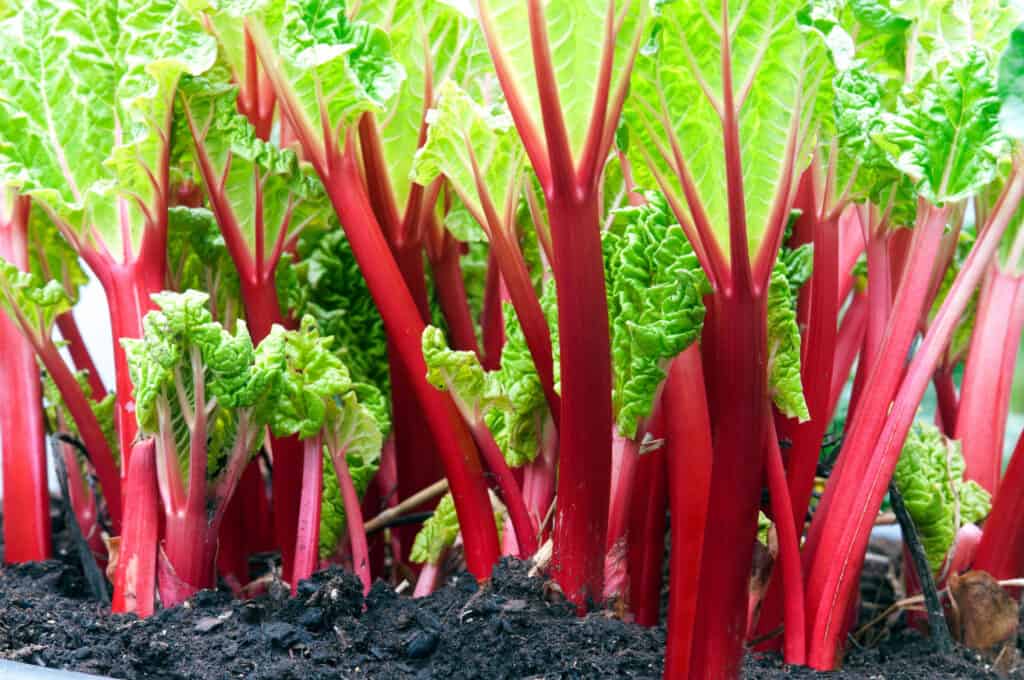
While all varieties will be tart and delicious, there are a number of rhubarb cultivars to choose from- over 100 to be more precise.
©HVPMdev/Shutterstock.com
Many people choose to plant rhubarb because of just how special and easy it is to grow. In fact, most rhubarb varieties live anywhere from 5-10 years, and some have reportedly lived for decades! A single rhubarb seed producing harvest after harvest, decade after decade? That’s definitely an impressive feature. It’s even more impressive when you consider the fact that rhubarb repopulates itself, meaning you don’t have to lift a finger to bring these delicious stalks back.
However, it’s important to mention that, while rhubarb stalks are delicious and nutritious, rhubarb leaves are deadly. Containing high levels of oxalic acid, rhubarb leaves can poison people, so be sure to never eat rhubarb leaves. You should also take care to never eat rhubarb past its prime, as oxalic acid easily spreads from the leaves into the stalks as it ages.
Harvesting Rhubarb Seeds
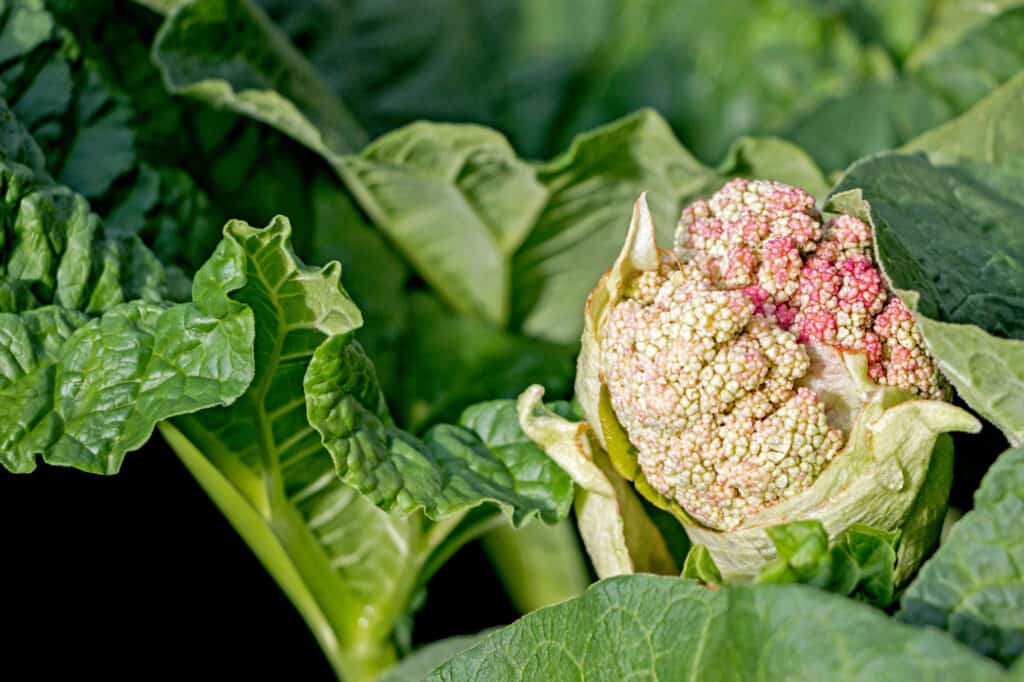
After a flowering period, rhubarb turns a stark brown color, and you’ll notice papery seeds rattling on the stalk.
©celiachen/Shutterstock.com
Not only does rhubarb continue to produce, it’s also incredibly easy to retrieve seeds from this plant. This is great news for those of you wanting to share the love of rhubarb with your neighbors, friends, or fellow gardeners.
Here’s how to harvest rhubarb seeds from your rhubarb plants:
- Leave a few stalks of rhubarb for all of summer and fall. These stalks need a decent amount of time to transform and turn to seed, but it’s a fairly obvious process. Harvest all other stalks and leave only a few to go to seed; a single stalk of rhubarb can produce hundreds of seeds!
- Wait until the stalk has dried up and turned brown. After a flowering period, rhubarb turns a stark brown color, and you’ll notice papery seeds rattling on the stalk. Now is the time to harvest, and you should remove the entire stalk from the earth.
- Remove the seeds from the stalk. This process should be easy if your timing is right. Gently brush all seeds from the rhubarb stalk.
- Allow the seeds to dry before storing. The texture and coating of rhubarb seeds makes it ideal for mildew growth, so make sure your seeds dry out for roughly a week before storing them until germination time!
Up Next
- Blackberry Seeds: How to Grow Your Own Berry Bramble
- Columbine Seeds: How to Plant and Grow This Perennial Beauty
- Lupine Seeds: Grow This Beautiful Wildflower in Your Own Garden
The photo featured at the top of this post is © Marika Kosheleva/Shutterstock.com
Thank you for reading! Have some feedback for us? Contact the AZ Animals editorial team.






